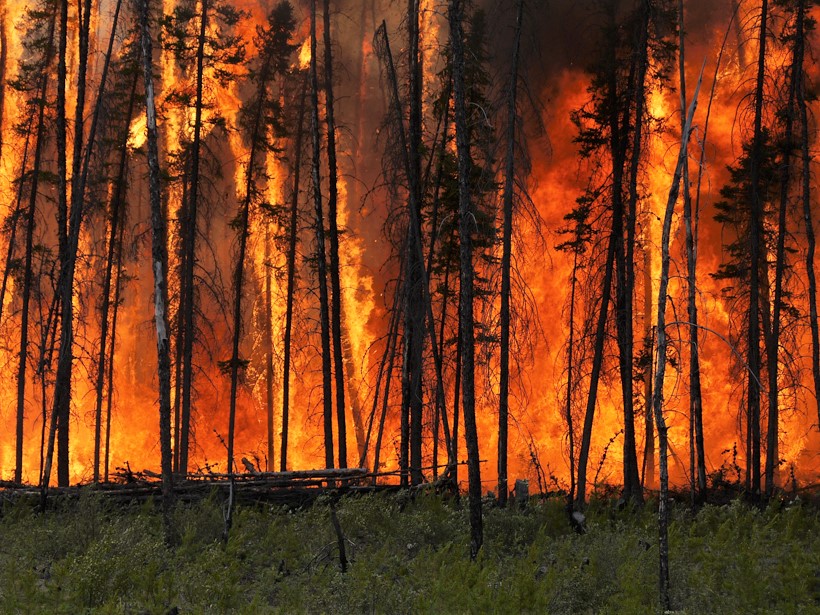Over the past few years, major fire seasons in fire-prone regions such as Australia and the western United States and unprecedented fire activity in fire-sensitive areas such as the Amazon basin and the Arctic have captured much attention from the public and the media—as well as the Earth and atmospheric science community. AGU is launching a new special collection across 10 journals to bring together the most up-to-date research under the theme ‘Fire in the Earth System’.
Fire has always been an important component of many ecosystems, but global warming is changing fire regimes over much of Earth’s land surface.
Fire has always been an important component of many ecosystems, and of human–landscape interaction, but anthropogenic global warming is already changing fire regimes over much of Earth’s land surface [Abatzoglou et al., 2019]. Between 1979 and 2013 the length of fire-weather season increased globally by 19% [Jolly et al., 2015], and higher wildfire activity attributable to climate change is evident already in regions of Africa, Europe, and the Americas [IPCC, 2014].
In addition to climate, human activities are also key controllers of fire via ignition, suppression, and changes in fuel availability [Knorr et al., 2016]. In some regions, most wildfires are ignited by humans, some through arson and many through various unintentional means; however, climate and weather control fire behavior and spread, determining whether ignitions grow into catastrophic fires.
Understanding the interactions of fire, humans, and climate in the Earth system is fundamental to prepare for the future ahead, but also extremely challenging.
Understanding the interactions of fire, humans, and climate in the Earth system is fundamental to prepare for the future ahead but also extremely challenging as these interactions are many and complex. For example, elevated fire risk under a warmer climate has long been recognized as a result of warmer temperatures drying out fuels, setting the stage for higher fire spread probability, larger burn area, and greater risk of extreme fire behavior; however, increases in aridity that decrease vegetation cover can lead to reductions of fire activity [Rogers et al., 2020].
In the coming years, the predicted changes in fire regimes may result in more widespread impacts to landscapes, ecosystems, and hazards to human health, life, and property. For example, the changing role of fire in forest landscapes is already threatening drinking-water supplies across the world [Bladon, 2018], and the number of people at risk from wildfire smoke is rapidly increasing in the United States [Cascio, 2018].
In addition, feedbacks between fires and other natural hazards such as extreme storms can be exacerbated under a changing climate; a recent example occurred in Montecito, California, in January 2018, causing 23 deaths and over $200 million of property damage as debris flows formed during intense rainfall on steep recently burnt slopes [Lai et al., 2018].
Fire is considered a means by which terrestrial ecosystems and the carbon cycle could surpass irreversible ‘tipping points’ under future climate [Adams, 2013]. Fire also interacts with other landscape processes affected by climate change—through feedbacks such as reduced albedo of snow and ice where soot deposits, and through enhanced wind erosion of burned dryland soils.
A newly opened special collection across 10 AGU journals will bring together new research on the processes associated with landscape fires and their impacts.
A newly opened special collection across 10 AGU journals, entitled Fire in the Earth System, will bring together new research on physical and biogeochemical processes associated with landscape fires, implications for human and ecosystem health, effects on water resources and critical infrastructure, fires in the wildland-urban interface, the use of prescribed fire and other mitigation strategies, and modeling efforts to characterize potential future fire regimes in a changing world.
We solicit manuscripts on research representing new advances in understanding these and other aspects of fire, and we especially encourage cross-disciplinary consideration of fire-related processes. The manuscript-submission window will remain open until May 2021 to allow for the inclusion of findings from the 2020 (northern-hemisphere summer) and 2020–21 (southern hemisphere summer) fire seasons.
—Amy E. East ([email protected]; ![]() 0000-0002-9567-9460), Editor in Chief, JGR: Earth Surface; and Cristina Santin (
0000-0002-9567-9460), Editor in Chief, JGR: Earth Surface; and Cristina Santin (![]() 0000-0001-9901-2658), Associate Editor, JGR: Biogeosciences
0000-0001-9901-2658), Associate Editor, JGR: Biogeosciences
Citation:
East, A., E.,Santin, C. (2020), New special collection: Fire in the earth system, Eos, 101, https://doi.org/10.1029/2020EO143177. Published on 27 April 2020.
Text © 2020. The authors. CC BY-NC-ND 3.0
Except where otherwise noted, images are subject to copyright. Any reuse without express permission from the copyright owner is prohibited.

